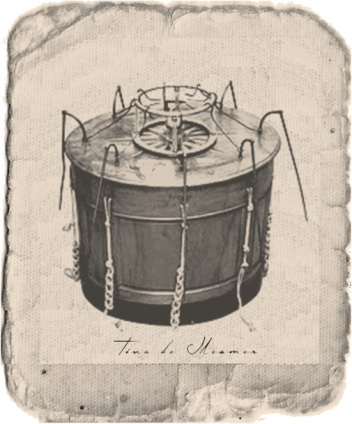I’m a Halloweenie. I just can’t help it. There’s something about the cooler evenings of Fall that bring out the goblin in me and cause me to ransack the basement in search of fake spiderwebs and inflatables. Maybe it’s the change in the weather, the fact that I can wear my regular wardrobe (seriously, I’m addicted to hooded sweatshirts), or the fact that there’s pumpkin spice EVERYTHING. I don’t know. All I know is, the mere sight of the Halloween section in a store, no matter how minuscule, makes my heart flutter and instantly transports me to a time when my dad and I would ransack the neighborhood for candy treats in one of the many homemade costumes he had designed and crafted for me. But that was a long time ago.
Since the days of trick or treating with my dad, I’ve moved from Newfoundland, Canada, to Milwaukee, WI. I’ve also aged 22 years. I’ve gotten married and purchased a house. In the purchase of my home came a new conundrum. Trick or Treat. There isn’t one. Well, let me clarify, it’s terrible. We get MAYBE four kids a year and apparently, because we’re on a main street, that’s a banner number. I’ve tried reaching out to my neighborhood group to gain some insight into the issue, but I generally get the runaround. That’s why I’m looking for other ways to celebrate my favorite season. That’s why, on October 29th, I attended a play.
The Sunset Playhouse in Elm Grove, WI, put on a production in which they read through a handful of the works of Edgar Allen Poe. My dear Edgar had such a whimsical way of looking at madness and mayhem that I thought would be most appropriate given the season. I attended and sat in silence as they read through classics like The Raven and The Black Cat. They even did Hopfrog, a piece that sometimes gets overlooked for its macabre qualities. Although I was disappointed with the attire of the actors, one wore a dress that appeared to have been made out of sweatshirt material and there wasn’t a cravat in sight, their delivery of Poe’s work was very well done. As a cherry on the evening (in my opinion), they did a read through of The Facts in the Case of M. Valdemar, a story that offers a very interesting look into the practice of mesmerism.
Valdemar is mesmerized at the point of death in an experimental effort to separate Valdemar’s mind from his body to see exactly how long his death could be postponed. Mesmerizing the patient essentially involves the narrator in the story motioning with his hands, supposedly pushing and pulling some unseen energy into and out of the half-alive Valdemar. The narrator inquires into Valdemar’s well being throughout the procedure of being mesmerized, asking repeatedly if he is “asleep.” Valdemar responds over and over to the narrator’s questions, stating that he is indeed still asleep, but bade’s the narrator to let him “die so.”
The story as a whole is very interesting, but it is more than just a mere story. You see, Poe didn’t just make up a story (or two or three) about mesmerism. He was crafting a commentary on the very real practice of mesmerization, one that could be seen repeated by many a practitioner during Poe’s time.
Mesmerized
Franz Freidrich Anton Mesmer was born in Germany in 1734 and became a physician with a noted interest in astronomy. Mesmer had a theory that there was some sort of natural transference of energy between inanimate and animated objects which he called animal magnetism, later referred to as mesmerism. It was a popular theory between around 1780 and 1850 and held sway over a great many people who believed that Mesmer was actually able to control this energy.
Mesmer grew up in the village of Iznang, on the shore of Lake Constance in Swabia and attended a couple of Jesuit universities before eventually taking up the practice of medicine at the University of Vienna in 1759. The doctoral dissertation he wrote in 1766 entitled De planetarum influxu in corpus humanum (On the Influence of the Planets on the Human Body). The work basically expounded upon Isaac Newton’s theory of the tides, stating certain tides in the human body might be accounted for by the movements of the celestial bodies within the solar system. It has been suggested that Mesmer plagiarized a part of his dissertation from a work by Richard Mead, English physician and a close friend of Newton. Luckily for Mesmer, during this particular time period, it didn’t matter whether or not the work was plagiarized. In 1768, he married a wealthy widow named Anna Maria von Posch and worked on establishing himself as a physician in Vienna.
In 1774, Mesmer produced his first reaction within a patient using his theory of animal magnetism. He referred to it as creating an “artificial tide” within his patient, Francisca Osterlin, who suffered from hysteria (just as a footnote, some believed that hysteria was caused by the occasional tendency of a woman’s uterus to wander around inside her body, causing madness). Mesmer had Osterlin swallow a concoction containing iron filings, then proceeded to attach magnets to various parts of her body. The patient reported a sensation of streams of “mysterious fluid” running all through her body and felt relief of the symptoms she’d reported for several hours afterward. Mesmer was a humble sort and did not believe the magnets had anything to do with curing Osterlin. He believed that his own animal magnetism had been transferred to her and that he, himself, was the cure. I think perhaps Osterlin mistook the power of suggestion for mezmerism.
Mesmer continued to treat his patients using his technique and even offered group sessions. For individuals, he would sit directly in front of the patient and press his knees against his patients knees. He would then press his thumbs into the backs of the patients hands and look into his patients eyes. Mesmer would then move his hands from the patients shoulders, down his arms, and concluded the treatment by pressing his fingers on the area just below the diaphragm. Many patients reported feeling “peculiar” or convulsed afterward. Mesmer regarded these as “crises” leaving the body and that they would bring about relief of his patients symptoms. These treatments were often followed by some sort of musical interlude. It was all very theatrical. As Mesmer brought his patients deeper into a trance, many would swoon or make noise. Mesmer, draped in a flowing gown, would wave his hands over each of the patient’s bodies, transferring his healing energy to them.
For group sessions, Mesmer would prepare a “baquet” for his patients. The process was described by an English physician who witnessed one such treatment (around 1780.)

https://commons.wikimedia.org/wiki/File:Baquet_de_Mesmer.jpg
In the middle of the room is placed a vessel of about a foot and a half high which is called here a “baquet”. It is so large that twenty people can easily sit round it; near the edge of the lid which covers it, there are holes pierced corresponding to the number of persons who are to surround it; into these holes are introduced iron rods, bent at right angles outwards, and of different heights, so as to answer to the part of the body to which they are to be applied. Besides these rods, there is a rope which communicates between the baquet and one of the patients, and from him is carried to another, and so on the whole round. The most sensible effects are produced on the approach of Mesmer, who is said to convey the fluid by certain motions of his hands or eyes, without touching the person. I have talked with several who have witnessed these effects, who have convulsions occasioned and removed by a movement of the hand…
Not surprisingly, Mesmer’s “treatment” didn’t always work. In 1777, when Mesmer’s cure all failed to treat the blindness of an 18-year-old musician, Maria Theresia Paradis, Mesmer was ridiculed and left Vienna, eventually settling in Paris. He set up a practice in the most affluent part of the city and began accepting patients. The city was split on Mesmer. Some believed he was a charlatan while others believed that he had made some miraculous discovery.
A physician of high acclaim at the time, a Dr. Charles d’Eslon, appreciated the fact that Mesmer understood health as the free flow of the process of life through thousands of different channels. Overcoming obstacles (illness) that inhibited the flow through these channels produced “crises” which restored health to the patient. Often, a patient might not be able to accomplish this on their own, calling into employ someone like Mesmer ( a conductor of animal magnetism) who could safely accelerate the process. In some instances, curing insanity might call for causing a fit of madness. Achieving a cure in a safe environment was beneficial for all involved.
A Doctor or A Fool?
In 1784, to Mesmer’s chagrin I’m sure, King Louis XVI called together four members of the Faculty of Medicine to investigate the process of Mesmerization. They examined whether or not Mesmer had discovered a new physical fluid, not necessarily whether or not his process worked, but at the end of their investigation three of the four commissioners decided there was no evidence to prove such a fluid was in existence. The final commissioner, a botanist, took exception to the official final report. Antoine Laurent de Jussieu declared Mesmer’s theory credible and worthy of further investigation, but it is likely that opinion was largely ignored. After this point, Mesmer faded from the limelight. He was driven into exile soon after the investigations concluded and was ridiculed for his practices.
According to Abbé Faria, an Indo-Portuguese monk in Paris and a contemporary of Mesmer, said “nothing comes from the magnetizer; everything comes from the subject and takes place in his imagination, i.e. autosuggestion generated from within the mind.”
Have you ever been mesmerized or hypnotized? What were your experiences? I’d love to read them. =)
Your Fellow Haunt Head,
Janine
Tweet us @hauntheadscast
Facebook: Haunt Heads Podcast
HAPPY HALLOWEEN!!

Advertisements Share this:





